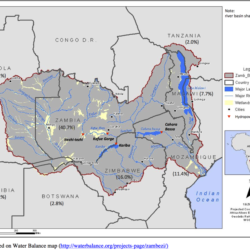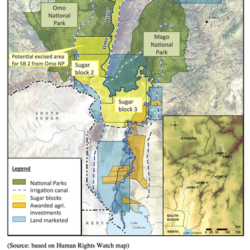The Zambezi River Basin is the fourth largest basin of Africa with an area of 1.32 million km2 shared by eight countries (Angola, Botswana, Malawi, Mozambique, Namibia, Tanzania, Zambia and Zimbabwe) and populated by almost 40 million inhabitants. In 2004 an agreement among the eight riparian states was signed to create the Zambezi Watercourse Commission (ZAMCOM) with the purpose of enhancing the cooperation over the shared water resource of the Zambezi River Basin to increase agricultural yields, hydropower production and economic opportunities.
2018 Highlights
A series of events took place in the region with direct relevance to DAFNE’s work area, in addition to the meetings with local stakeholders already planned in the DAFNE Project. Some of the notable events in which the DAFNE Project was represented include::
- 8th Workshop on SADC River Basin Organisations, 8-9 May 2018 Windhoek, Namibia;
- 7th Zambezi Water Forum and Exhibition, 11-13 June 2018, Lusaka Zambia
- SADC-GMI Annual Groundwater Conference, September 2018, Johannesburg, South Africa;
- Second Technical Dialogue on the Regional Operational Framework and Investment Nexus WEF, 20-21 November 2018, Gaborone, Botswana;
- Studies on the Impact on Ecosystem Services in the Zambezi Basin.
Researchers from the DAFNE Project analysed how ecosystem services in the basin are being affected by developments in the regions. The proliferation of the Water Hyacinth is a notable concern at Kafue Dam, causing a nutrient load that subsequently reduces water quality.
Ongoing DAFNE Project studies in the basin are investigating the management of reservoir/reservoir operations to control the spread of malaria and the invasive Water Hyacinth. IWMI has published a summary of policies on Dams and Malaria in Africa, which can be accessed here.
2019 Highlights
Basin Level Negotiation Simulation Lab, July 2019
The DAFNE Project hosted the monitoring of the Negotiation Simulation Laboratories in both basins in July 2019 with the aim of providing an opportunity to share the results of actions, indicators and solutions identified in the first NSL meetings. Stakeholders will be able to test initial prototypes of DAFNE’s Multi-Perspective Visual Analysis Tool and Geo-portal, which will include a catalogue of data, interactive maps and dynamic graphics. Stakeholders will learn more about the tools’ functionalities and will have the opportunity to provide feedback to improve the tools.
3rd Technical Dialogue on the SADC WEF Nexus, March 2019
This is part of the ongoing series of technical dialogues in the SADC region, which focus on the WEF (Water-Energy-Food) nexus and discuss possible investment opportunities in this space.
Special session on the operationalization of the Water-Energy-Food Nexus at the 20th WaterNet / WARFSA / GWP-SA Symposium.
The IWMI team in Southern Africa, in partnership with ETH-Zurich and the University of Zambia, led a special session on ‘Operationalizing the Water-Energy-Food Nexus’ at the 20th WaterNet / WARFSA / GWP-SA Symposium. The session was implemented as part of the DAFNE Project and was attended by over 20 participants representing key institutions including consultants, universities and government institutions. The objectives of the session were (i) To review ongoing projects and consider their achievements and practical results; (ii) To discuss what can be done to achieve better benefits within the WEF Nexus. Presentations were made of two ongoing projects in the Southern African Development Community (SADC) region – DAFNE and another project funded by the South African Water Research Commission – Assessing the State of the Water-Energy-Food Nexus (WEF) in South Africa – which served as the basis for panel discussions, involving participants in identifying successes and challenges in operating the WEF nexus. Participants concluded that practical steps still needed to be taken to ensure that the WEF nexus concept is properly structured and communicated to the different stakeholders in order to achieve the successes associated with its implementation.




